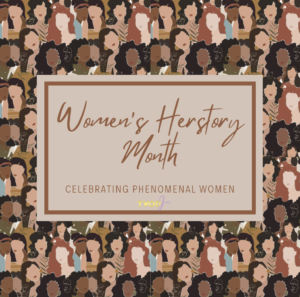
While this month is commonly known for the color green, leprechauns and four leaf clovers, many women recognize March as a month-long reflection of history.
Every day, women of color, religion and ethnic groups are continually breaking barriers and making history. Women have played a massive role in advancing America’s business, political and cultural landscape into what it is today.
Kierra Borough, an active volunteer with empowering organizations for women such as The Oasis Center For Women & Girls, understands that March needs more recognition.
“It starts with education and what our children are learning in schools,” Borough said. “Many teachers decorated their classroom green for years and highlighted St. Patrick’s Day; no room celebrated Women’s History Month. The attention needed for this month won’t come overnight. To get more attention, it will take a collective force that we [women enthusiasts] can’t do alone.”
Many know that March is Women’s History Month, but do you know the founding purpose? Dedicating a month to women’s contributions in science, politics, law, sports and entertainment helps to balance our historical women figure. It is not only the celebration, but the deliberation of women’s contribution to society.
Maya Kingston, the digital creator of Miss EmpowerHER, speaks about the inconsistent support for women on social platforms such as twitter and instagram.
“If it involves sharing information on women’s rights, many people don’t give it a lot of attention,” Kingston said. “For two years, I have been building my empowerment brand. Many people don’t seem as interested in the oppression of women unless it’s trending on social media.”
Women’s History Month started as a week-long event hosted by the school district in the small town of Sonoma, California, in 1978. Sonoma’s Women’s Week was a celebration of women’s contributions to culture, history and the community. What started as a week-long event involved hundreds of students, community members, presentations, an essay contest and a parade.
Women’s organizations, such as the National Women’s History Alliance, campaigned yearly to recognize Women’s History Week. In 1980, President Jimmy Carter declared the week of March 8th Women’s History Week across the country. According to the Alliance in 1986, over 14 states had declared the entire month of March to be Women’s History Month. In March 1987, the determined activists were successful and they lobbied Congress to declare the month of March as Women’s History Month.
Women’s contributions in history are often overlooked and under-taught, so learning about underrepresented parts of history will benefit different people in many ways. We must diversify the past this country is built on with not only men, but women too.
A political science student, Kristie Malcom shares how women in politics have inspired her through the years.
“Currently, being a woman involved in politics is more significant than ever before,” Malcom said. “In the past, women with substantial government involvement, positions in the White House, or an active voice in political issues were not encouraged. Look at us now; we have Kamala Harris, a woman of color as the Vice-President of the United States.”
Women like Shirley Chisholm, Ruth Bader Ginsburg, Rosa Parks, and Sojourner Truth are all trailblazers that ignited this movement. Following the lead of trailblazers throughout American history, today’s female historical figures such as Vice-President Kamala Harris, Rosalind Brewer and Amanda Gorman are shaping not only today, but tomorrow.
Here are some fun things that you could do to acknowledge Women’s History Month and to build solidarity with other women:
- Watch movies directed by women and with female leads
- Write positive affirmations on notes and hand them out.
- Get involved with organizations that support women.
- Explore the history of women’s rights.